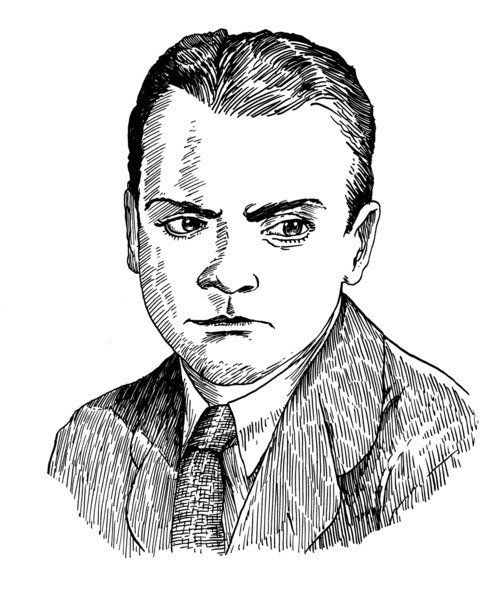Cagney’s Last Hurrah
In 1961, upon completing his final scene in Billy Wilder’s Cold War comedy One, Two, Three, James Cagney announced his retirement to everyone on the set. Having made similar announcements so many times in the past (often walking away from studio contracts in the process), nobody took him all that seriously. This time, however, it stuck. He was approached countless times of course with screenplays and offers, but the more he said no, the easier he was finding it to say no. (Well, he did relent to narrate two TV movies, including The Ballad of Smokey the Bear, but never appeared on camera.) After some 60 films, he was tired of the business and the bullshit, and much preferred living a quiet life of semi-seclusion.
In 1980, well aware of what everyone else had encountered, director Milos Forman nevertheless approached Cagney with the script for Ragtime, a film based on the acclaimed novel by E.L. Doctorow.
At the time Cagney was 81 years old. He was suffering from diabetes and sciatica, and three years earlier he’d suffered a small stroke that left him unable to paint, ride a horse, or do any number of other things he’d so enjoyed. Understandably he slipped into a depression. Stories differ here, but when Forman approached him about Ragtime, Cagney’s wife and nurse both urged him to do the film, feeling it would be good for him to get out of the house and in front of the cameras for perhaps one last time.
Cagney, you might say, agreed to agree to do the film, on two conditions according to Forman. He did not want to sign a contract of any kind, and he maintained the right to change his mind and drop out at any point up to three days prior to his first scene. Nerve-wracking as such a deal was, Forman agreed and got underway with the pre-production.
Cagney’s scenes were set to be filmed in England, and when he stepped off the QE II (he always preferred boats), the crowd gathered to cheer him, security officials on the scene reported, were larger than they had ever seen before. And a few days later when Cagney appeared on the set (with still one day left to drop out if he so chose), everyone in the crew stopped what they were doing to give him a standing ovation. Again according to Forman, Cagney’s eyes welled with tears. It was only then that he finally and fully agreed to do the picture. The fact that he would be co-starring with his old friend and Irish Mafia cohort Pat O’Brien might have had something to do with it, too.
Those who were there during the shoot say Cagney never once flubbed a line even as those comparative youngsters around him did, and he was more than happy to hand out his share of advice and pointers to the other actors.
Sadly Cagney as NYC Police Commissioner Waldo does not appear until the final third of the picture. The assorted merits and lack thereof of Ragtime aside, there is simply something magical about Cagney on the screen. Even at 81 and suffering from a variety of health problems, his unmistakable physicality and voice are impossible to ignore, and snap the viewer back to attention. you want to see everything he does and hear every word he says. Sadly again, there’s not much of it. It’s an important role, but a small one—yet one that seems to make all the other actors in the film disappear, even when Cagney’s not on the screen. You know he’s there somewhere off-screen, doing something, and you just wait until he reappears.
I was not alone in this reaction, as most of the reviews of the film were focused on what a joy it was to see Cagney again. Who better than Cagney to remind us what a real star and real actor can do, and of how bereft Hollywood is these days, touting this faceless army of nobodies who all look and sound alike as “actors,” or even—god help us—”movie stars.” Compared to James Cagney… well, even using the word “compared” is a senseless insult. It’s like comparing a soggy hairball to a lightning bolt.
Ragtime is usually cited as Cagney’s last film, and indeed it was his last appearance on the big screen. Two years later, however, he did star as a retired boxer in the TV film Terrible Joe Moran. By that point his health had worsened considerably and he was forced to use a wheelchair. He was, in fact, in far worse shape than the character he portrayed. Perhaps that’s why people tend to forget this film. Cagney was always such a symbol of vitality, it’s painful to see him that way. He died some three years later at age 88.
After seeing Ragtime again recently, I think more than anything else I was simply grateful. Grateful he made that decision to end his retirement, however briefly.
By Jim Knipfel
Portrait by Tony Millionaire

